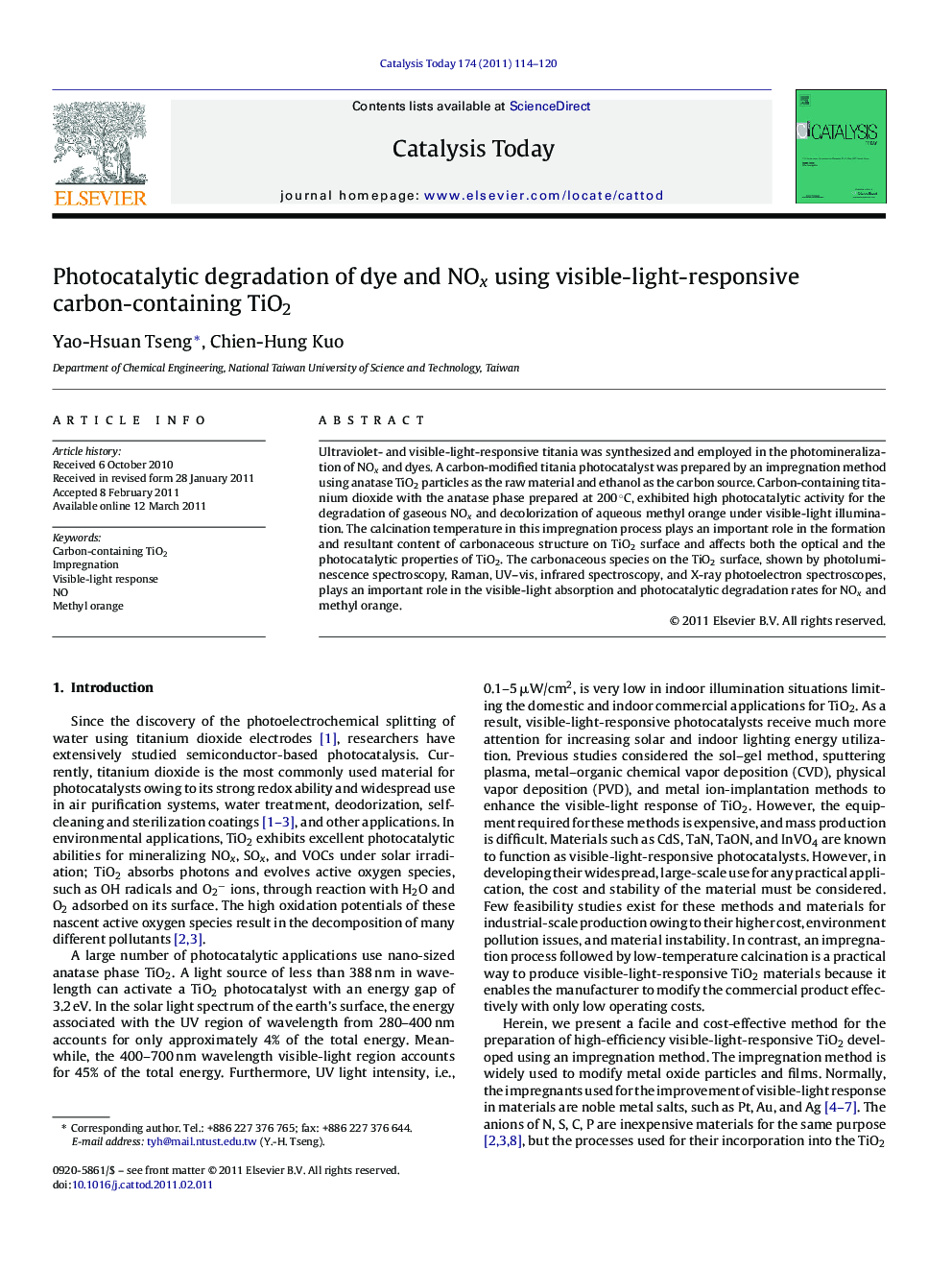| Article ID | Journal | Published Year | Pages | File Type |
|---|---|---|---|---|
| 55913 | Catalysis Today | 2011 | 7 Pages |
Ultraviolet- and visible-light-responsive titania was synthesized and employed in the photomineralization of NOx and dyes. A carbon-modified titania photocatalyst was prepared by an impregnation method using anatase TiO2 particles as the raw material and ethanol as the carbon source. Carbon-containing titanium dioxide with the anatase phase prepared at 200 °C, exhibited high photocatalytic activity for the degradation of gaseous NOx and decolorization of aqueous methyl orange under visible-light illumination. The calcination temperature in this impregnation process plays an important role in the formation and resultant content of carbonaceous structure on TiO2 surface and affects both the optical and the photocatalytic properties of TiO2. The carbonaceous species on the TiO2 surface, shown by photoluminescence spectroscopy, Raman, UV–vis, infrared spectroscopy, and X-ray photoelectron spectroscopes, plays an important role in the visible-light absorption and photocatalytic degradation rates for NOx and methyl orange.
Graphical abstractFigure optionsDownload full-size imageDownload high-quality image (175 K)Download as PowerPoint slideResearch highlights► Carbon-contained TiO2 shows a high photocatalytic activity in NOx oxidation and dye decolorization under visible-light illumination. ► The optimal synthesis temperature is 200 °C to covert alcohols as carbonate structure. ► This carbonate structure is able to increase the visible-light absorption and reduce the probability of e−/h+ recombination.
